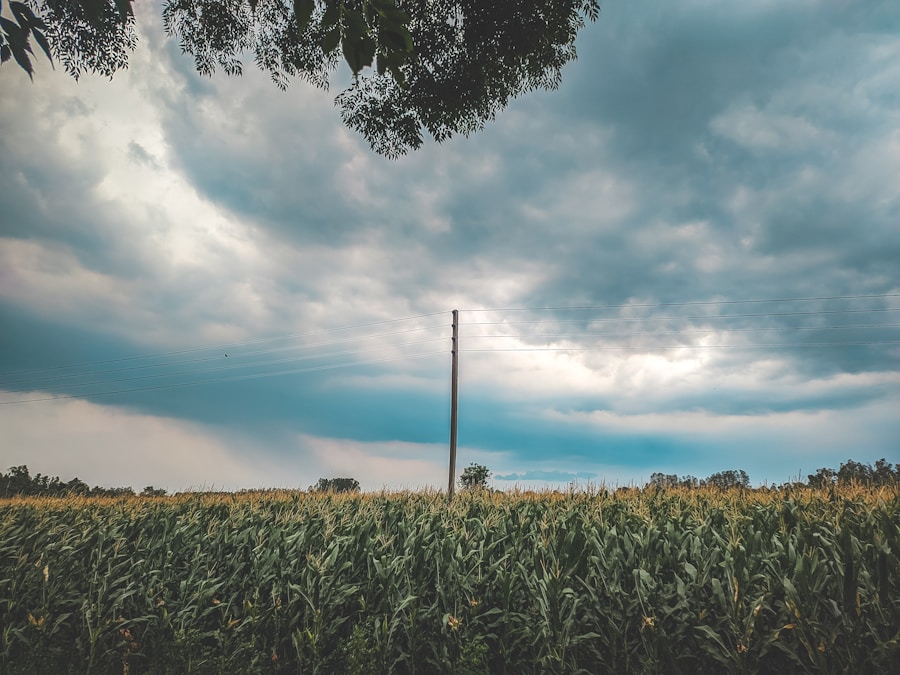The advent of artificial intelligence (AI) has revolutionized numerous sectors, and weather forecasting is no exception. Traditionally, meteorology relied heavily on numerical weather prediction models, which utilized vast amounts of data from satellites, weather stations, and ocean buoys. However, the integration of AI into this field has introduced a paradigm shift, enabling more accurate and timely predictions.
By leveraging machine learning algorithms and deep learning techniques, AI can analyze complex datasets far more efficiently than human meteorologists, leading to enhanced forecasting capabilities. AI-based weather forecasting systems are designed to learn from historical weather patterns and real-time data, allowing them to make predictions that are not only faster but also more precise. These systems can identify subtle trends and correlations that might be overlooked by conventional methods.
As a result, they are becoming indispensable tools for meteorologists and climate scientists alike, providing insights that can significantly improve our understanding of weather phenomena and their implications for society. AI systems are revolutionizing industries, for more information visit AI systems.
Key Takeaways
- AI-based weather forecasting uses advanced algorithms to analyze large amounts of data and make accurate predictions.
- Real-time weather prediction using AI allows for more precise and timely forecasts, helping to improve preparedness for weather-related events.
- AI plays a crucial role in providing warnings for extreme weather events, helping to minimize the impact on communities and infrastructure.
- Utilizing AI for country-specific agricultural planning enables farmers to make informed decisions and optimize their crop yields.
- The advantages of AI-based weather forecasting include improved accuracy, increased lead time for warnings, and better resource allocation for disaster management.
Real-Time Weather Prediction using AI
Overcoming Traditional Forecasting Limitations
Traditional weather forecasting methods often involve a time lag due to the extensive data processing required. In contrast, AI algorithms can process incoming data streams almost instantaneously, allowing for rapid updates and adjustments to forecasts.
Enhanced Forecasting in Dynamic Weather Conditions
This capability is particularly crucial in situations where weather conditions can change dramatically within short time frames, such as during thunderstorms or hurricanes. Moreover, AI systems can utilize data from a variety of sources, including social media feeds, IoT devices, and mobile applications. By aggregating this information, they can create a more comprehensive picture of current weather conditions.
Real-Time Analysis for Enhanced Accuracy and Timely Alerts
For instance, AI can analyze tweets or posts about local weather events to supplement traditional data sources, providing a richer context for predictions. This real-time analysis not only enhances the accuracy of forecasts but also enables timely alerts for communities at risk of severe weather events.
AI’s Role in Extreme Weather Event Warnings

The increasing frequency and intensity of extreme weather events due to climate change have underscored the need for advanced warning systems. AI plays a pivotal role in enhancing these systems by improving the accuracy and lead time of warnings for events such as hurricanes, tornadoes, and floods. Machine learning models can analyze historical data on extreme weather patterns and identify indicators that precede such events, allowing for earlier detection and response.
For example, AI algorithms can process satellite imagery to detect changes in cloud formations that may signal an impending storm. By correlating these visual cues with historical data, the models can predict the likelihood of severe weather with greater precision. This capability is invaluable for emergency management agencies, as it allows them to mobilize resources and implement evacuation plans well in advance of an impending disaster.
Ultimately, AI’s ability to provide timely warnings can save lives and mitigate property damage during extreme weather events.
Utilizing AI for Country-Specific Agricultural Planning
Agriculture is one sector that stands to benefit immensely from AI-based weather forecasting. Farmers rely heavily on accurate weather predictions to make informed decisions about planting, irrigation, and harvesting. By utilizing AI models tailored to specific regions or countries, agricultural planners can gain insights into local climate patterns and optimize their practices accordingly.
For instance, AI can analyze soil moisture levels, temperature variations, and precipitation forecasts to recommend the best times for planting crops. Additionally, it can help farmers anticipate pest outbreaks or disease risks associated with certain weather conditions. By integrating these insights into their planning processes, farmers can enhance crop yields while minimizing resource waste.
This not only contributes to food security but also promotes sustainable agricultural practices that are increasingly vital in the face of climate change.
Advantages of AI-based Weather Forecasting
The advantages of AI-based weather forecasting are manifold. First and foremost is the improved accuracy of predictions. Traditional models often struggle with the chaotic nature of weather systems, leading to uncertainties in forecasts.
In contrast, AI algorithms excel at identifying patterns within large datasets, resulting in more reliable predictions that can be crucial for decision-making in various sectors. Another significant advantage is the speed at which AI can process data. In an era where information is generated at an unprecedented rate, the ability to analyze this data quickly is essential.
AI systems can continuously learn from new data inputs, refining their models over time and adapting to changing climatic conditions. This adaptability ensures that forecasts remain relevant and accurate even as environmental factors evolve. Furthermore, AI-based forecasting systems can enhance public engagement with weather information.
By providing personalized alerts through mobile applications or smart devices, these systems empower individuals to make informed decisions based on real-time data. This level of accessibility fosters a greater awareness of weather-related risks and encourages proactive measures to mitigate potential impacts.
Challenges and Limitations of AI in Weather Forecasting

Despite its numerous advantages, the integration of AI into weather forecasting is not without challenges. One significant limitation is the reliance on high-quality data. While AI algorithms are adept at processing large datasets, their effectiveness hinges on the accuracy and completeness of the input data.
In regions where data collection infrastructure is lacking or where historical records are sparse, the performance of AI models may be compromised. Additionally, there is a risk of overfitting in machine learning models. Overfitting occurs when a model becomes too tailored to historical data, resulting in poor performance when faced with new or unseen conditions.
Striking the right balance between model complexity and generalization is crucial for ensuring that AI systems remain robust across various scenarios.
The potential for bias in training datasets can lead to skewed predictions that disproportionately affect certain communities or regions.
Addressing these biases requires ongoing vigilance and a commitment to transparency in the development and deployment of AI models.
Future Developments in AI-based Weather Forecasting
Looking ahead, the future of AI-based weather forecasting holds exciting possibilities. As technology continues to advance, we can expect even more sophisticated algorithms capable of processing increasingly complex datasets. The integration of quantum computing may further enhance computational capabilities, allowing for more detailed simulations of atmospheric conditions.
Additionally, collaboration between meteorologists and data scientists will be essential for refining AI models. By combining domain expertise with cutting-edge technology, researchers can develop more accurate forecasting tools that account for a wider range of variables. This interdisciplinary approach will be crucial for addressing the multifaceted challenges posed by climate change.
Furthermore, as public awareness of climate issues grows, there will likely be an increased demand for accessible weather information tailored to individual needs. Future developments may include personalized forecasting services that consider users’ specific locations and preferences, empowering individuals to make informed decisions based on localized data.
The Impact of AI on Weather Forecasting and Planning
In conclusion, the integration of artificial intelligence into weather forecasting represents a transformative leap forward in our ability to understand and predict atmospheric phenomena. From real-time predictions to enhanced warnings for extreme weather events, AI has proven itself as an invaluable tool for meteorologists and planners alike. Its applications extend beyond mere forecasting; they encompass critical areas such as agriculture and disaster management.
While challenges remain in terms of data quality and ethical considerations, ongoing advancements in technology promise a future where AI-driven forecasting becomes even more accurate and accessible. As we continue to grapple with the impacts of climate change, harnessing the power of AI will be essential for developing effective strategies to mitigate risks and adapt to an ever-changing environment. The journey toward smarter weather forecasting is just beginning, and its implications will undoubtedly shape our understanding of the world around us for years to come.
AI-based Weather Forecasting is revolutionizing the way we predict and prepare for extreme weather events. With real-time data analysis and advanced algorithms, this technology can provide accurate forecasts and warnings to help countries plan for agricultural needs. For more information on the challenges and opportunities in the metaverse, including privacy and security concerns, check out this article. Additionally, learn about Xiomi’s HyperOS and future trends and innovations in the metaverse by visiting this link and this article.
FAQs
What is AI-based weather forecasting?
AI-based weather forecasting refers to the use of artificial intelligence (AI) technologies, such as machine learning algorithms, to analyze large amounts of weather data and make accurate predictions about future weather conditions.
How does AI-based weather forecasting work?
AI-based weather forecasting works by analyzing historical weather data, satellite imagery, and other relevant information using machine learning algorithms. These algorithms can identify patterns and trends in the data to make predictions about future weather conditions.
What are the benefits of AI-based weather forecasting?
The benefits of AI-based weather forecasting include more accurate and timely weather predictions, which can help in planning for extreme weather events, improving agricultural planning, and enhancing overall preparedness for weather-related challenges.
How does AI-based weather forecasting improve real-time weather prediction?
AI-based weather forecasting improves real-time weather prediction by continuously analyzing incoming data and updating predictions in real-time. This allows for more accurate and up-to-date weather forecasts, which can be crucial for making timely decisions in various industries and sectors.
How does AI-based weather forecasting help in issuing extreme weather event warnings?
AI-based weather forecasting can help in issuing extreme weather event warnings by identifying early warning signs and patterns in weather data. This can lead to more timely and accurate warnings for events such as hurricanes, tornadoes, and severe storms, allowing for better preparedness and response.
How does AI-based weather forecasting support country-specific agricultural planning?
AI-based weather forecasting supports country-specific agricultural planning by providing accurate and localized weather predictions. This can help farmers and agricultural planners make informed decisions about planting, irrigation, and harvesting, leading to improved crop yields and overall agricultural productivity.











Leave a Reply